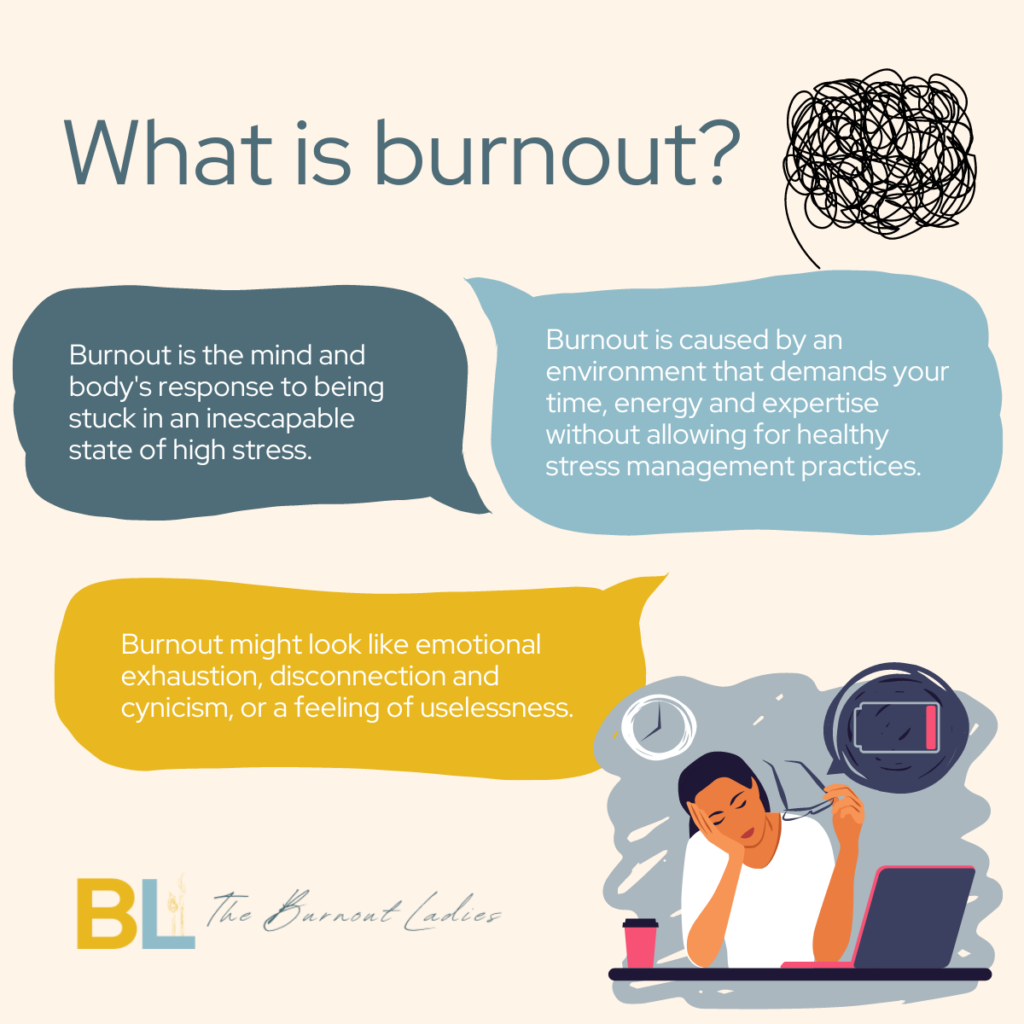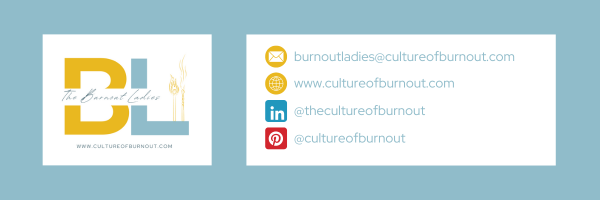
Do you know what burnout looks like? On today’s blog we’ll be exploring the key symptoms of burnout. We hope this will help you understand what it is and what you can do about it.
What is burnout?
If you’re reading this blog because you Googled “symptoms of burnout” then 1. You’re very welcome to the blog and 2. We’re so sorry you had to Google that. We can help.
First up, we have to talk about what burnout is before we can dig into the symptoms. The most official definition of burnout we found for our book is the World Health Organization (WHO) resource called the International Classification of Diseases (ICD). In 2019, they added burnout to the ICD-11. They define burnout as:
Burn-out is a syndrome conceptualized as resulting from chronic workplace stress that has not been successfully managed. It is characterized by three dimensions:
1) feelings of energy depletion or exhaustion;
2) increased mental distance from one’s job, or feelings
of negativism or cynicism related to one’s job; and
3) a sense of ineff ectiveness and lack of accomplishment.
Burn-out refers specifically to phenomena in the occupational context and should not be applied to describe experiences in other areas of life.
You’ll see that they were helpful enough to include symptoms in their definition and we’ll get back to that in a minute. But first, we want to share our definition of burnout and why it’s different from theirs. We spent (a lot) of time looking at this definition and decided it wasn’t really fit for purpose. Our definition of burnout is:

You see, the biggest problem we had with the WHO’s definition of burnout was its reference to burnout occurring in an “occupational context.” According to WHO, burnout only happens at work. We disagree, and you probably do too.
That’s why in our definition we reference any “environment that demands your time, energy and expertise.” This means burnout can happen while parenting, while volunteering for your kids soccer team, or during paid work. We feel our definition gives a lot more space to where and how you might be feeling burned out.
Speaking of feeling, let’s get to those symptoms of burnout.
What are the key symptoms of burnout?
In our definition, you’ll see that we have the same 3 main symptoms as the WHO. These are generally agreed upon to be the top symptoms of burnout. However, for our definition it was important to have more flexible language. Instead, we say that “burnout might look like.” This is because our research found that folks with different genders, disabilities, and family roles, might experience different symptoms.
We’ve written about some of these differences on our blog – so we encourage you to check out our writing on how gender affects burnout, and what you need to know about caregiver burnout and disability burnout.
We are not medical professionals, and we are not writing blogs to diagnose burnout. But, if you are feeling emotional exhaustion, disconnection and cynicism, or a feeling of uselessness about any form of work you do, you might want to look for more resources on understanding burnout.
We’d love to continue to help you on that journey. You can learn more about our book HERE.
Or you can sign up for our newsletter HERE.



